One of the places Marissa really wanted to visit was a certain coffee plantation she heard about from the Guatemalan owner of a fair trade store in Chicago. After recovering from the near-death experience of our Santiaguito volcano expedition we took a chicken bus from Quetzaltenango (or Xelahow the locals call it) to a small town called Colomba.
Marissa was excited about her first ride in a chicken bus. These are old yellow US school busses that, after getting a more or less fancy paint job, are used as local buses all throughout Central America. The term ‘chicken bus’ stems from the fact that people use them to transport just about anything, including chicken (on our bus there were some chicks, too). From Colomba we hat to take a collectivo to the plantation. Collectivos are another interesting mean of transportation here. It’s basically a driver with a pickup truck that leaves whenever enough passengers have accumulated to fill the back of his truck. You get lot’s of fresh air, it’s almost like driving a cabrio, only that it’s a pickup and you share the car with at least 10 other people standing next to you… on second thought it resembles more an overcrowded subway.
We arrived at the cute little finca of the ‘Santa Anita La Unión‘. There were a few communal buildings, a church of course, though the soccer field seemed far more popular, at least amongst the boys of the village. We found the person Marissa had been in contact with and settled in at the guesthouse. We were the only guests that day and had the entire house for ourselves. Unexpectedly there were even hot showers, a TV and a huge movie collection. The village was very quiet and we seemed to be the only foreigners here which was great. This was probably the most ‘authentic’ experience (if such a thing exists) of Guatemalian everyday life we got during our stay in the country. We had our meals with one of the families in the commune. Our first dinner was some chicken (what else…) soup and tortilla. During the dinner a hungry kitten kept trying to climb up my leg and get onto the table to have some of the chicken. After several attempts it finally succeeded. Who wouldn’t agree that kitten are much cuter than puppies? Marissa does. The husband of the young family had a chat with us. Learning that I was from Germany I got the obligatory ‘Do you like soccer?’. No! ‘Basketball?’ Nope. ‘Any other sports?’ Not really. ‘Hmm, do you like women??’ Ha, that cracked Marissa and me up…
Later at night we watched ‘FightClub’ (my choice) in the living room of our house. This was the first time I watched TV on a couch in a long time. I must admit, it did make me feel a little bit like home (wait… I don’t even have a TV at home). After Marissa went to bed, I worked on a fun fuel cell animation for one of my scistyle clients for most of the night. The next morning we got our two-hour tour of the plantation. The guide explained to us that the commune consists of 35 families, each has their own little piece of land to grow coffee, bananas etc. but the harvesting, processing and selling they all do together.
Unfortunately, it wasn’t harvesting season, yet. One of the things that surprised me the most was how the coffee was grown. This plantation was nothing like the monoculture fields that I expected even on a organic farm. It was more like a jungle with a few coffee bushes here and there. From the ecological point of view it might be better this way because you still have a high biodiversity. On the other hand it needs more space (= more jungle clearing) to produce the same amount than a densely-planted monoculture. Because the coffee is harvested by hand, no harvesting machines or cars need to pass through the plantation.
Most of the coffee fruits we saw on the bushes were still green but there were a few red ripe ones, too. I didn’t know you can actually chew those. They taste slightly sweet. The coffee bean in the center has a bright color. It’s kind of strange to see all this when the only form of coffee you usually ever get to see is the roasted coffee bean.
One thing that excited me even more than the whole coffee experience was the first snake I got to see in the wild this year. It was a small non-venomous one and kind of shy. I touched its tail and it escaped. The plantation is located near a cliff with a bit of jungle and a waterfall on the other side. A beautiful sight which reminded me of Jurassic Park (minus the dinosaurs). Another muddy and exhausting hike down the cliff got me some pictures of another waterfall, a white centipede and some wet shoes. I wish the guides here were a little more informative about what expects you on a hike – before you set out. Maybe next time…

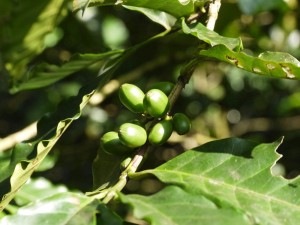

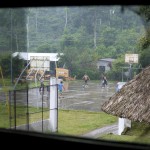

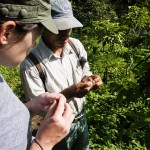
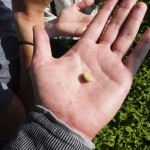
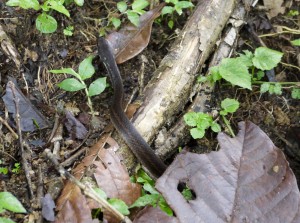
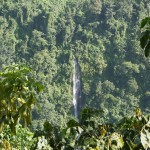
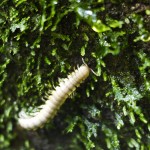
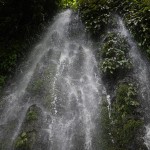







No Comments
No comments yet.
RSS feed for comments on this post. TrackBack URL
Leave a comment
RSS